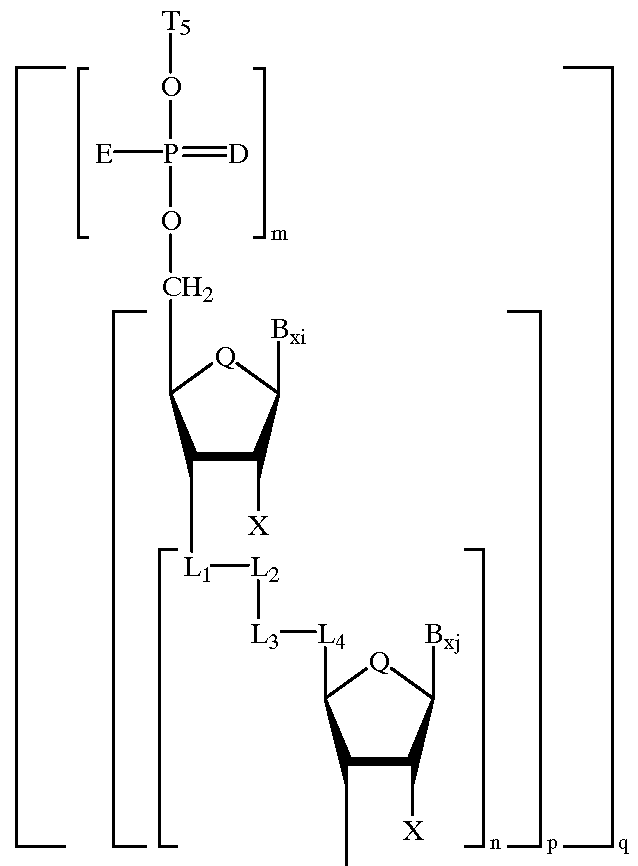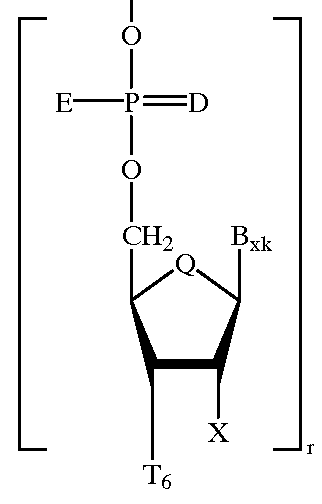Heteroatomic oligonucleoside linkages
a technology of oligonucleosides and heteroatomic oligonucleotides, applied in the field of oligonucleotide analogs, can solve the problems of insufficient activity of many previously available antisense oligonucleotides for practical therapeutic, research or diagnostic purposes, and the inability of unmodified oligonucleotides to be useful therapeutic agents
- Summary
- Abstract
- Description
- Claims
- Application Information
AI Technical Summary
Benefits of technology
Problems solved by technology
Method used
Image
Examples
example 2
N.sup.3 -Benzyloxymethyl-5'-O-Tert-Butyldiphenylsilylthymidine, 3
To a stirred solution of 2 (117.0 g, 243.8 mmol) and Hunig's base (diisopropylethylamine, 63.0 g, 487.5 mmol) in CH.sub.2 Cl.sub.2 (400 mL) at 23.degree. C. was added a solution of benzyl chloromethyl ether (40.7 g, 260.0 mmol) over a 15 min. period. The resultant mixture was maintained at 23.degree. C. and stirred for 14 h. Ether (1 L) was added to the mixture and the ethereal solution was washed with 10% aqueous HCl (2.times.100 mL) and H.sub.2 O (200 mL). The organic layer was dried (MgSO.sub.4) and concentrated under reduced pressure. The residue was purified by silica gel column chromatography (CH.sub.2 Cl.sub.2 / AcOEt 40:1 then 10:1) to yield 128.9 g (88%) of 3 as a white solid. R.sub.f (CH.sub.2 Cl.sub.2 / AcOEt 10:1) 0.31. .sup.1 H-NMR (CDCl.sub.3): 1.10 (s, 9H, C-Me.sub.3), 1.65 (s, 3H, 5-Me), 2.16 (m, 1H, 2'-H.sub..beta.), 2.41 (m, 1H, 2'-H.sub..beta.), 2.53 (br s, 1H 3'-OH), 3.84 (d, 1H, J=8.8 Hz, 5'-CHH), 3....
example 3
N.sup.3 -Benzyloxymethyl-3'-O-Benzoyl-5'-O-Tert-Butyldiphenylsilylthymidine, 4
A stirred solution of 3 (128.0 g, 213.3 mmol) in a 4:1 mixture of CH.sub.2 Cl.sub.2 / Et.sub.3 N (500 mL) was treated with (48.4 g, 40 mL, 344.6 mmol) of BzCl at 23.degree. C. for 8 h. The resultant precipitate was removed by filtration. The filtrate was concentrated under reduced pressure to leave the crude product as a brownish syrup. Purification of the syrup by silica gel column chromatography (hexanes / AcOEt 10:1 then 1:1) gave 130.7 g (87%) of 4 as a white solid. R.sub.f (Hexanes / AcOEt 1:1) 0.82 .sup.1 H-NMR (CDCl.sub.3): 1.40 (s, 9H, C-Me.sub.3), 1.60 (s, 3H, 5-Me), 2.37 (ddd, 1H, J=13.8, 9.3, 7.2 Hz, 2'-H.sub..beta.), 2.62 (dd, 1H, J=13.8, 4.3 Hz, 2'-H.sub..beta.), 4.09 (m, 2H, 5'-H), 4.26 (m, 1H, 4'-H), 4.74 (s, 2H, O--CH.sub.2 --Ph), 5.54 (s, 2H, N--CH.sub.2 --O), 5.71 (d, 1H, J=7.2 Hz, 3'-H), 6.57 (dd, 1H, J=9.3, 4.3 Hz, 1'-H), 7.24-7.74 (m, 13H, aromatic-H), 8.05-8.15 (m, 3H, 6-H and aromatic-H)....
example 4
N.sup.3 -Benzyloxymethyl-3'-O-Benzoylthymidine, 5
The silyl ether 4 (96.0 g, 136.4 mmol) in THF (600 mL) was treated with hydrogen fluoride-pyridine (70% HF in pyridine, 30 mL) at 0.degree. C. for 4 h under a N.sub.2 atmosphere. The resultant mixture was diluted with AcOEt (600 mL) and washed with H.sub.2 O (2.times.300 mL). The organic layer was dried (MgSO.sub.4) and concentrated at reduced pressure. The residue was purified by silica gel column chromatography (CH.sub.2 Cl.sub.2 / AcOEt 10:1) to give 61.6 g (97%) of 5 as a white solid. R.sub.f (CH.sub.2 Cl.sub.2 / AcOEt 10:1) 0.29. .sup.1 H-NMR (CDCl.sub.3 +D.sub.2 O): 1.95 (s, 3H, 5-Me), 2.53 (m, 2H, 2'-H), 4.00 (m, 2H, 5'-H), 4.25 (m, 1H, 4'-H), 4.71 (s, 2H, O--CH.sub.2 --Ph), 5.51 (s, 2H, N--CH.sub.2 --O), 5.60 (m, 1H 3'-H), 6.36 (dd, 1H, J=7.6, 6.6 Hz, 1'-H), 7.25-7.66 (m, 9H, 6-H and aromatic-H), 8.05 (d, 2H, J=7.1 Hz, aromatic-H). .sup.13 C-NMR (CDCl.sub.3): 13.29 (-, 5-Me), 37.82 (+, 2'-C), 62.54 (+, 5'-C), 70.73 (+, O--C--Ph)...
PUM
| Property | Measurement | Unit |
|---|---|---|
| pH | aaaaa | aaaaa |
| v/v | aaaaa | aaaaa |
| v/v | aaaaa | aaaaa |
Abstract
Description
Claims
Application Information
 Login to View More
Login to View More - R&D
- Intellectual Property
- Life Sciences
- Materials
- Tech Scout
- Unparalleled Data Quality
- Higher Quality Content
- 60% Fewer Hallucinations
Browse by: Latest US Patents, China's latest patents, Technical Efficacy Thesaurus, Application Domain, Technology Topic, Popular Technical Reports.
© 2025 PatSnap. All rights reserved.Legal|Privacy policy|Modern Slavery Act Transparency Statement|Sitemap|About US| Contact US: help@patsnap.com


